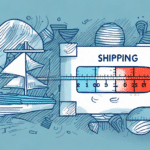Understanding UPS Box Size Shipping Rates and Weights
When shipping with UPS, understanding the factors that affect shipping rates and weights is crucial. One such factor is the size of the UPS box you use for your shipment. In this article, we will explore the importance of UPS box size for shipping rates, how to determine the weight of your shipment, choosing the right UPS box size, the impact of dimensional weight on shipping costs, tips for reducing shipping costs with UPS box sizes, best practices for packing and labeling UPS shipments, understanding additional fees and surcharges for UPS shipping, comparing UPS shipping rates to other carriers, and tracking your UPS shipment.
Why UPS Box Size Matters for Shipping Rates
UPS calculates shipping rates based on a combination of factors, including package dimensions, weight, and destination. The size of the UPS box you use for your shipment can significantly impact the shipping rate. Generally, the larger the box, the higher the shipping rate. This is because larger boxes take up more space on UPS vehicles and planes, leading to higher costs for the carrier.
Conversely, using a box that is too small for your shipment can also result in higher shipping costs. UPS may charge you for the dimensional weight of the package, which is calculated based on the size of the box rather than its actual weight. To avoid this, ensure that you use a box that is appropriately sized for your shipment. Utilize UPS's online dimensional weight calculator to determine the most cost-effective box size for your needs.
How to Determine the Weight of Your Shipment
Before selecting a UPS box size, you need to accurately determine the weight of your shipment. Here are the steps to do so:
- Use a Scale: Weigh your shipment using a reliable scale, including the box and all packaging materials.
- Estimate for Large Shipments: If your shipment is too large for a standard scale, use UPS's online shipping calculator to estimate the weight based on package dimensions.
- Consider Packaging Materials: Include the weight of all packaging materials to ensure an accurate total weight.
Accurate weight determination is essential because heavier packages typically incur higher shipping costs. Additionally, some shipping methods have weight restrictions, making it important to select the appropriate shipping option based on your package's weight.
If you are unsure about the weight of your shipment or need assistance with selecting the appropriate box size, UPS offers in-store assistance from their shipping experts. They can help you determine the weight of your shipment and select the best packaging and shipping options for your needs.
Choosing the Right UPS Box Size for Your Shipment
Selecting the appropriate UPS box size is key to optimizing your shipping costs and ensuring the safety of your items. Consider the following factors when choosing a box size:
- Item Dimensions: Choose a box that comfortably fits your items without excessive space.
- Weight Capacity: Ensure the box can support the weight of your shipment without compromising its integrity.
- Fragility: Use sturdier boxes and adequate cushioning materials for fragile items.
Using UPS’s variety of box sizes and packaging materials can help ensure your shipment arrives safely and securely. Additionally, consider the type of items being shipped and their specific requirements to choose the most suitable packaging.
The Impact of Dimensional Weight on Shipping Costs
Dimensional weight is a pricing technique used by UPS and other carriers that considers the volume of a package in relation to its actual weight. It is calculated by multiplying the package's length, width, and height and dividing by a dimensional weight divisor.
When the dimensional weight of a package exceeds its actual weight, UPS charges based on the dimensional weight. This means that even if your package is lightweight, a larger box can result in higher shipping costs.
To minimize costs associated with dimensional weight:
- Use appropriately sized boxes to reduce unused space.
- Consolidate multiple items into a single package when possible.
- Choose lightweight packaging materials.
By optimizing both the size and weight of your packages, you can effectively manage and reduce your shipping expenses. For more detailed guidance, refer to UPS’s dimensional weight guide.
Tips for Reducing Shipping Costs with UPS Box Sizes
Implementing strategic practices can help you reduce shipping costs when using UPS box sizes:
- Select the Right Box Size: Avoid oversized or undersized boxes by accurately measuring your items and choosing the smallest box that fits.
- Consolidate Shipments: Combine multiple items into one shipment to benefit from lower rates.
- Use Flat Rate Boxes: UPS offers flat rate boxes that can be a cost-effective option, especially for heavier items.
- Minimize Packaging Weight: Remove unnecessary packaging materials and use lightweight alternatives.
- Leverage Online Tools: Utilize UPS’s online shipping tools to compare rates, schedule pickups, and find the most economical shipping options.
Additionally, proper labeling can prevent delays and avoid unexpected fees. Ensure that all shipping labels are clear and include complete addresses with apartment or suite numbers where applicable.
Best Practices for Packing and Labeling UPS Shipments
Proper packing and labeling are essential to ensure your UPS shipment arrives safely and on time. Follow these best practices:
- Use Quality Packaging Materials: Utilize bubble wrap, packing peanuts, and sturdy boxes to protect your items.
- Secure Your Items: Ensure that items are tightly packed to prevent shifting during transit.
- Label Clearly: Include both the recipient’s and sender’s full addresses. Use clear, legible fonts or handwriting.
- Attach Shipping Labels Properly: Place the shipping label on a flat surface of the package and ensure it is easily visible.
- Include a Packing List: For business shipments, include a packing list inside the package to detail the contents.
By adhering to these practices, you can minimize the risk of damage and ensure a smooth delivery process. For detailed packaging guidelines, refer to UPS’s packaging guide.
Understanding Additional Fees and Surcharges for UPS Shipping
When shipping with UPS, it's important to be aware of potential additional fees and surcharges that may apply:
- Fuel Surcharge: A variable fee based on the fluctuating cost of fuel.
- Residential Delivery Charge: Additional fees for deliveries to residential addresses.
- Special Handling Fees: Fees for shipments that require extra handling, such as fragile or hazardous materials.
- Declared Value Fee: Charges for declaring a higher value for insurance purposes.
- Remote Area Surcharge: Additional costs for deliveries to remote or hard-to-reach locations.
To avoid unexpected charges:
- Review UPS’s fee schedule before shipping.
- Accurately declare the value of your shipment.
- Choose delivery options that best fit your needs and budget.
Understanding these fees allows you to better estimate your shipping costs and choose the most economical shipping options.
Comparing UPS Shipping Rates to Other Carriers
When selecting a shipping carrier, it's essential to compare rates and services to find the best fit for your needs. Here’s how UPS compares to other major carriers:
- UPS: Known for reliable ground and air services with extensive tracking capabilities. Often offers competitive rates for both domestic and international shipments.
- FedEx: Offers a wide range of shipping options with a focus on speed and reliability, particularly for overnight and express deliveries.
- USPS: Typically more cost-effective for smaller, lighter packages and offers various flat rate shipping options.
- DHL: Specializes in international shipping with a strong global presence, making it ideal for global businesses.
Consider factors such as shipping speed, reliability, cost, and customer service when comparing carriers. Utilize online comparison tools to evaluate the best shipping options based on your specific requirements.
For a comprehensive comparison, visit ShipScience’s carrier comparison page.
Tracking Your UPS Shipment: What You Need to Know
Once your shipment is on its way, you can easily track its progress using UPS's tracking tools. Here’s how:
- Tracking Number: Obtain your tracking number from your shipping receipt or UPS email confirmation.
- Online Tracking: Enter your tracking number on the UPS tracking page to view real-time updates on your shipment’s status.
- Mobile App: Download the UPS mobile app to track shipments on the go and receive push notifications.
- Notifications: Opt-in for email or text message alerts to stay informed about your shipment’s progress and delivery status.
Tracking your shipment provides peace of mind and allows you to monitor the delivery process. In case of any delays or issues, UPS’s customer service can assist you in resolving them promptly.
By understanding the factors that affect UPS box size shipping rates and weights, you can make informed decisions when shipping your packages. Whether you are a business owner or an individual sending a gift to a loved one, following these best practices can help you save money and ensure your package arrives at its destination safely and on time.
It's important to note that UPS offers various shipping options to fit your specific needs. From ground shipping to air freight, UPS has a range of services to choose from. Additionally, UPS provides packaging supplies and services to ensure your package is properly secured and protected during transit. By taking advantage of these options, you can customize your shipment to meet your unique requirements and ensure a successful delivery.




















